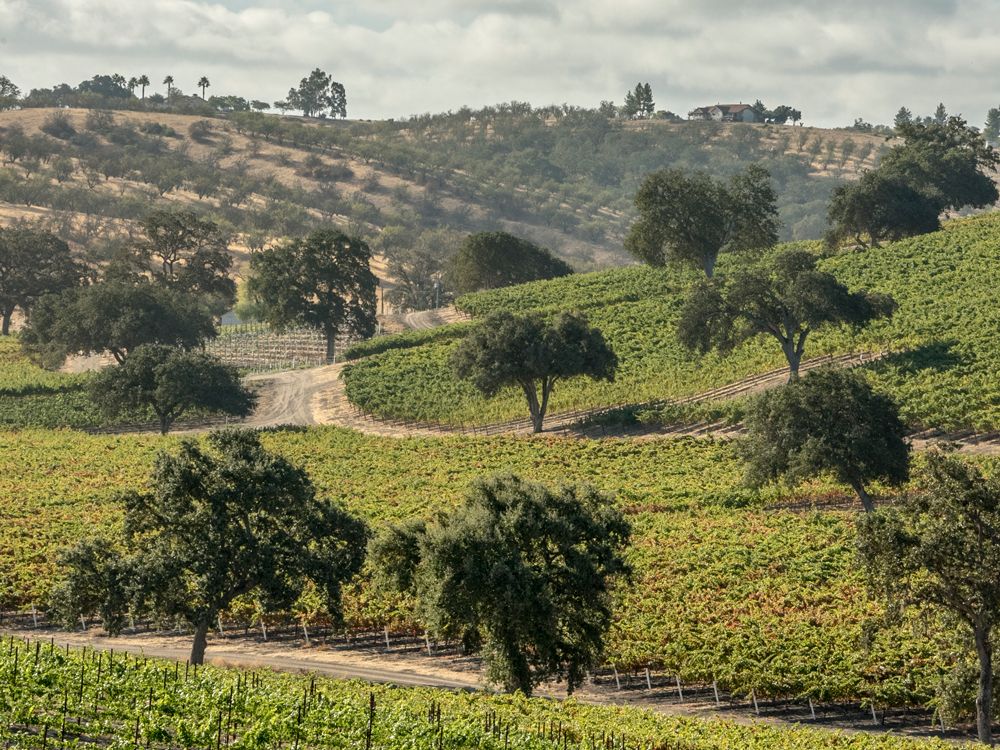Paso Robles: Discover California wine country at its loveliest

Credit to Author: Mary Beth Roberts| Date: Sat, 24 Aug 2019 13:24:41 +0000
They say Paso Robles is California’s biggest and fastest-growing wine region. But cruise into sleepy downtown Paso and you’d find it hard to believe.
The main square is peaceful, an idyllic green space resting dreamily under tall oak trees and surrounded by historic buildings that house small, independent boutiques and restaurants. It looks a bit like Sonoma did, before the crowds discovered it and only the rich could afford it. It looks a lot like wine country should, the way you wish it always could be and so often isn’t.
The courtyard at the luxe Allegretto Vineyard Resort in Paso Robles, Calif.
Paso Robles—the name means “pass of the oaks,” and “robles” is pronounced to rhyme with “nobles,” not “ro-blay”—is about halfway between San Francisco and Los Angeles, and about halfway between Interstate 5 and the coast. To the west is Hearst Castle and the Pacific Ocean; to the east, the stretch of road where James Dean met his end. (There’s a rest stop there where you can buy local pistachios and creepy memorabilia.)
Wine has been made in Paso Robles since the 1790s. Franciscan friars planted the first grapes here 60 years before California even became a state. Today there are more than 250 wineries and 40,000 acres of vineyard in a wildly diverse region that comprises some 600,000 acres of mountains, rolling hills, valleys, river bottoms and flatlands. Little wonder then that the Paso Robles AVA (American Viticultural Area), established in 1983, has been subdivided into 11 distinct sub-regions.
Increasingly, olives are almost as important a crop as grapes in Paso Robles.
Those high peaks and low valleys make this a beautiful region to explore, but, along with the ocean breezes that whistle through the series of mountain passes known as the Templeton Gap, they also lead to dramatic temperature swings between hot days and cool nights. And that, combined with the region’s complex soils, makes this an even better place to grow wine.
More than 40 different grapes are planted here, mostly big reds led by crowd-pleasing Cabernet Sauvignon and robust Zinfandel. But this is also the happy playground of the Rhône Rangers, a group of winemakers who champion grape varieties from France’s Rhône Valley, especially juicy, spicy reds like Grenache, Syrah and Mourvedre and lush whites such as Viognier, Marsanne and Roussanne.
The first to produce a 100-per-cent Syrah wine in Paso was Gary Eberle, a living legend in these parts. A former football player turned winemaker, he co-founded the Paso Robles appellation back in ’83 and was the first to use it on a label; he has since been recognized with the 2015 Wine Industry Lifetime Achievement award and the 2019 Robert Mondavi Hospitality Award, among other accolades. A visit to Eberle Winery is an essential stop in Paso, a tour and tasting in the cool wine caves below the tasting room an unforgettable experience.
Downtown Paso Robles evokes a more graceful time, its heritage buildings housing independent boutiques and small, chef-owned, farm-to-table restaurants.
Reverance for the Rhône really took hold around 1990 when the Perrin family of Château de Beaucastel, perhaps the most famous winery in Châteauneuf-du-Pâpe, entered into a partnership with American wine importer Robert Haas to found Tablas Creek Vineyard. The winery is beautifully biodynamic—adorable sheep, alpacas and donkeys graze in the vineyards to keep weeds at bay, while providing free organic fertilizer—but it’s also a pioneer in preserving once-endangered grape varieties like Grenache blanc, Counoise and newly trendy Picpoul blanc.
Small, independent, family-owned wineries are scattered through the hills here, each doing its own thing. The high-altitude Adelaida Cellars, for instance, offers a “Tour, Taste, and Tailgate” experience that comprises a rollicking tour through the vineyards, culminating in a picnic lunch with a spectacular view. Tobin James is set in a former stagecoach stop, its tasting room evoking an Old West saloon. And Sculpterra Winery is as beloved for its beautiful sculpture garden as it is for its big red blends.
There are big players here, too, J.Lohr, for instance, and Hope Family Wines, which has been making wine since 1978 and today comprises the Treana, Liberty School and Austin Hope labels. (Austin, the son of founder Chuck Hope, was recently named Paso Robles Wine Industry Person of the Year.) But big as these brands are, they are still family owned and firmly local, which just seems to be the Paso Robles way.
Lunch on the terrace at the high-altitude Adelaida Cellars.
That applies to the restaurant scene here, too. It’s one of small, chef-driven eateries that delight in serving fresh, locally sourced food. Many are located in the streets around the main square, a lovely place to amble around on a lazy evening. With the ocean just over the hills and ranch country just up the road, it’s a given that both seafood and beef are terrific here. And with so many people of Mexican background working in the vineyards, this is also a great place for tacos, empanadas, chilaquiles and margaritas.
The social calendar in Paso is chock full year-round with festivals, fairs, concerts, art shows and sports events like the half-marathon in March or tennis open in September. But the best way to enjoy this glorious part of California is simply to get in your car, hit the road and meander your way through the hills, past vineyards, almond orchards and olive groves, stopping here and there for a taste of wine or a bite of food.
You never know what you will find. You only know that it will be a delicious taste of California wine country, the way it was meant to be.
Here’s what you need to know if you plan to travel to Paso Robles.
For more information: To plan your trip, visit pasowine.com or travelpaso.com.